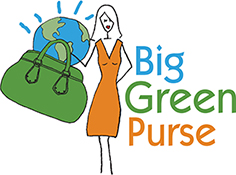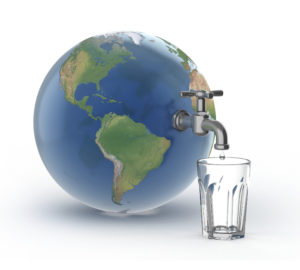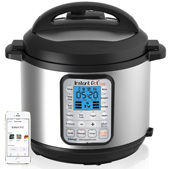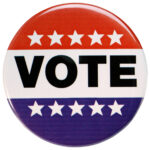Being able to get clean, safe drinking water straight from the tap is a right we’re all entitled to. Yet today’s news stories report, once again, that the water we drink every day may contain dangerous chemicals that cause cancer, birth defects, and other illnesses.
This time, the chemical in question is a compound called hexavalent chromium, or chromium 6. If it sounds familiar, it may be because you saw the movie “Erin Brockovich,” starring Julia Roberts. In the film, based on a true story, Roberts as Brockovich campaigns to protect residents of a small California town whose drinking water has been contaminated by hexavalent chromium. In real life, Brockovich, a legal aide, helps the town residents win a $333 million lawsuit against Pacific Gas & Electric, the company responsible for the contamination.
But that’s not the end of the tale. It turns out, hexavalent chromium persists in drinking water in dozens of American cities, including Bethesda, San Jose, Ann Arbor, Pittsburgh, Albuquerque, Atlanta, and Salt Lake City (note: If your city is not on the list, it might only mean that the water in your city wasn’t analyzed). The toxic chemical is released when plastics, steel, and paper pulp are manufactured; it’s also discharged by leather-tanning and metal-plating factories. It can pollute water when soil and rock erode as well. It exists in our drinking water for two reasons: because companies can release it into the environment without much legal or financial consequence; and because the U.S. Environmental Protection Agency does not currently impose regulations on municipalities to eliminate chromium 6 in our water — or at least, to reduce it to much safer levels.
You can get more information from the answers to this list of frequently asked questions; you can also read the full report on hexavalent chromium here. But don’t just read the report: take action to protect the water you and your family drink! Here’s how:
1) Don’t buy bottled water. Much bottled water comes straight from the same source as our drinking water. It looks healthier because it sports a fancy label touting how “pure” it is – but unless the label also says the water has been tested and proven to be free of hexavalent chromium and other contaminants, you’ll just be wasting your money. Instead, use your purse power to invest in a reverse osmosis filter (see below).
2) Filter your water at the tap. A reverse osmosis filter uses powerful carbon filters to capture a wide variety of contaminants. Some models sit on your countertop next to the kitchen sink; more expensive, under-the-counter options filter more water over time. Here’s a terrific guide that will help you choose a system for your home. Take a look at these models to get an idea of the choices you have and what they could cost. Keep in mind that the common PUR and Brita filters, which do a pretty good job of filtering out sediment and chlorine, DO NOT capture hexavalent chromium. Whatever system you use, remember to change the filter regularly (you can recycle Brita filters here). And don’t just drink filtered water; cook with it, too.
3) Contact your elected officials. Demand stronger regulations to require companies to contain the toxic chemicals they generate, rather than release them for the rest of us to clean up. And support efforts by the U.S. Environmental Protection Agency and your local water municipality to eliminate or reduce the presence of these toxins in the water we drink. Start by contacting your member of Congress and ask for hearings on water safety in the U.S.
RELATED POSTS:
“We’re Drinking the Same Water as Cleopatra. Is it as clean?”
“10 No-Brainer Ways to Use Water Wisely.”
“Bottled Water Not as Safe as Tap Water, Says GAO.”

















16 thoughts on “How to Keep Drinking Water Safe for You and Your Family (Bottled Water is Not the Answer)”
Chrominum 6 is just one of the concerns about getting water just south of Los Alamos wells and wate plants. See what Santa Fe NM is doing about it. Test your water and share your results with those in charge. Mary MacIntyre
I very much enjoyed your article about cleaning your drinking water. Working for a lab that tests drinking water for both public water supplies and bottled water companies, I would take bottled water any day over tap water. There is much confusion about EPA’s drinking regulations for public water and FDA regulations for bottled water. While public water supplies must meet many regulations they are not tested for the entire safe drinking water act on an annual basis. Depending on the state’s requirements some public water supplies may only be testing for pesticides and other synthetic organics once every nine years. Bottled water is required to test both the source and the finished product for synthetic organics and many other contaminants every year. Bottled water is tested more consistently than tap water, and while some sources use tap water they are also using sophisticated equipment to remove impurities. I do agree that it is more cost effective and eco-friendly to have a filtration device but bottled water is always an option.
I tell people all the time to buy a filter instead – not only is it better quality water, but it’s better for the environment, cheaper and more convenient too! No more lugging around heavy bottles. But still, most continue to buy bottled. They have really bought into the marketing ploys of the bottled water industry.
This is a great article. Makes me really want our water tested.
We’ve let many industries poison us for decades to preserve their right to the almighty buck. Known offenders routinely get off by paying a fine, then they just keep polluting. Fines are now an accepted cost of doing business.
I bet hardly anyone knows that most Minnesota (“the land of 10,000 lakes”) lakes are slowly dying from chemical run-off that is now threatening even the big cities.
Yes, most Americans really have no clue what the state of our environment is. It’s why I and so many other bloggers try to raise awareness the way we do. One way we can hold companies accountable is by changing what we buy, by buying safer products, and by passing strong laws to force companies to reduce pollution. Thanks for your efforts in Minnesota.
Check out this film: TappedTheMovie.com
Very informative concerning the bottled water industry.
I use to spend so much money on bottled water!There was a period I wasn’t drinking tap water thinking that bottled water was better. Then I read an article about this topic and I realized bottled water was a total scam! Don’t buy bottled water!
We couldn’t agree more about making the switch away from disposable water bottles to tap water, filtered when necessary, in reusable bottles. Three other moms and I started a community service project three years ago to help educate our town about the wastefulness of bottled water. We now provide updated educational materials free on our website plus great reusable alternatives. You never know where life will take you when you just decide to step out there and try to make a positive difference.
Reverse osmosis is not the best solution either. It is dead water with no minerals and thereby takes calcium from your bones to be able to process it. Reverse osmosis water is being linked with increased osteoporosis, in particular in men, and in kids, who are raised on on RO water, their teeth are coming in brittle instead of strong because the calcium is being leached from their bodies.
The filter I chose instead of RO is from Nikken and I think Santevia filters are along the same lines. With my Nikken water, I can taste and feel the difference. I am never dehydrated and don’t feel “full” after drinking several glasses of water because it is absorbed right away.
Thanks. I’ll look into it.
[…] found an additional website that offers excellent suggestions on how to protect yourself and family members from chromium-6 in […]
Comments are closed.